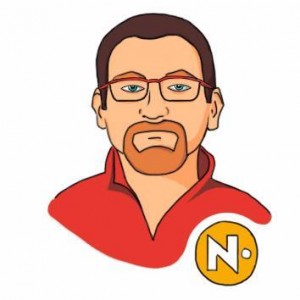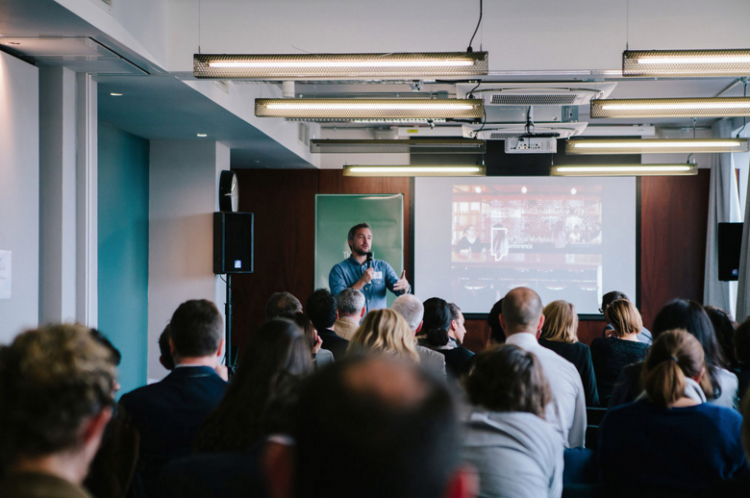“We opened our doors just before Christmas and are already starting to consider whether or not we are going to expand”- Oasis Offices, Malta
Andrew McGrath has been working in digital media for the better part of the last decade, and he loves it. Having a flexible schedule is a big part of his job satisfaction, but it doesn’t come without coworking. When one of McGrath’s clients, TAP Digital Media started looking to move to a new office, they both realized that this change could be the perfect opportunity to start a coworking space, and that’s how Oasis Offices was born!
As the coworking community in Malta is a relatively new one, we reached out to McGrath to find out a bit more about the challenges that faced by a relatively isolated community of workers, and also the perks of bringing coworking to Malta.
Hi, Andrew. Would you say that you are the first official coworking space in Malta?
There are only one or two other options on the island, but they’re better suited for small enterprises, which are looking for turn-key office space. At Oasis Offices, we really are geared to the individual digital nomad who’s looking for a desk and cool environment to work from. In that sense, I think it would be fair to say that we’re the first coworking space in Malta, truly designed for the individual.
We officially opened our doors just before the Christmas holidays, and only a few months later we’re already started to consider whether of not we are going to expand due to the volume of interest. Amazingly this has happened with basically no marketing or community outreach at all, so we’ve been very fortunate.
When not familiar with coworking, people can often be apprehensive, what were some of the challenges you faced?
Whenever I meet people who haven’t heard of the coworking concept I’m reminded of how insulated we can be from the “real world”. While there’s a huge amount of hype around “entrepreneurship” in pop culture these days, it’s important to remember that the actual concept of “working for yourself” is abstract to most people. Throw in the word “coworking” and you’re bound to be met with blank stares. Yet, by definition, those aren’t the people who are looking for a desk at Oasis Offices, so I’m not too worried.
Why are coworking spaces so important in non-urban centers?
The web has created a tremendous amount of opportunity for anyone with even the most basic levels of interest and ambition to ditch the standard 9 to 5 in favor of working for themselves. Those same people will find themselves missing the social benefits of a “workplace”, whether they’re in a big city, or on a tiny little island in the middle of the Mediterranean Sea. It’s no surprise those same people are often behind projects like Oasis Offices.
How do you personalize your space to your own unique community?
We started with the basic concept of “home meets office”. My idea of home is a welcoming kitchen, and a cozy, naturally lit living space, full of original artwork, lush plants, and people just getting along together and chatting. So that’s what we ultimately aimed for.
One of our main collaborative workspaces at Oasis features the kind of table and chairs you’d expect to see a family eating dinner around in their home. It looks great, and when you’re working there, it really doesn’t feel like you’re “at work” or “in the office”. Personally, it’s my favorite spot.
Do you cater to digital nomads? If so, how?
Totally! We believe in openness, collaboration and functionality and those core values are actually reflected in our office’s design.The layout of the office is open and unconstrained and features 10 meters of floor-to-ceiling windows, allowing us to look out at and be looked at by the people going about their day on the street.
The layout of the office is open and unconstrained and features 10 meters of floor-to-ceiling windows, allowing us to look out at and be looked at by the people going about their day on the street. 
Our all-glass meeting rooms, which, importantly, are also totally soundproof are another great example of the open vibe that we foster here. Overall, it’s just really nice, working here, and I’m saying that because I mean it. This is by far the most pleasant place I’ve ever worked from!
Does your coworking space go outside of the office in regards to collaborating with non-members?
Not really, as of yet, but that’s not to say it’s not on our radar! We’re currently focusing our energies on optimizing the business side of things before getting into the more recreational side of it all. But we absolutely look forward to hosting the community of digital nomads in our cozy digs in the very near future.
Since opening your space have you seen any tangible changes taking place? For example, are more people working together, new projects cropping up, etc?
Absolutely. I can report that we’re seeing very happy and productive people, here! It’s still early days, but we fully expect that as our family continues to grow, so too will the opportunities for collaboration.
What are some of your expectations for the future of professionals and creatives in Malta in regards to coworking?
Our feeling is that Malta is on a huge upswing, the real effects of which are only just starting to be felt. While the rest of Europe is limping along with the weight of an economic crisis around its ankle, Malta is steaming forward like a freight train, and not simply because it’s a “tax efficient” destination (those advantages benefit foreign-owned corporations which set up shop here, not the people employed by them).
Also, the wave of foreigners relocating here brings a whole new talent pool brimming with experience and innovation. These individuals are contributing to the rapid modernization of the cultural and social landscape here. The appearance of innovative small businesses like Oasis Offices and countless others over the last few years is evidence of this and has created a positive feedback loop which ensures the trend will only amplify over time. Malta has a very bright future indeed and we hope you’ll be joining us for the ride!
Source: Coworking Europe







Recent Comments